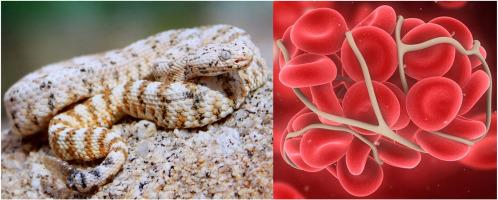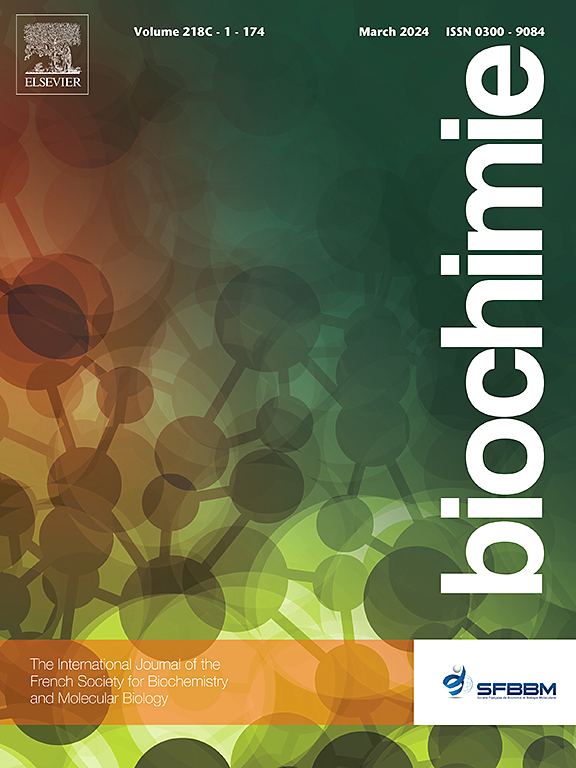Sometimes size does matter: Anticoagulant pathophysiological effects of Southwestern Speckled Rattlesnake (Crotalus pyrrhus) venoms are dichotomous by body size
IF 3
3区 生物学
Q2 BIOCHEMISTRY & MOLECULAR BIOLOGY
引用次数: 0
Abstract
The Southwestern Speckled Rattlesnake (Crotalus pyrrhus) is a medically significant pit viper with envenomation effects that include depletion of fibrinogen levels. Despite this the venom has been poorly studied. To fill this knowledge gap, we 57 venom samples obtained from 19 geographic localities, including both juvenile and adult venoms, for their effect upon human plasma and purified fibrinogen. For most localities, we were able to include both female and male specimens of varying sizes to test possible sexual venom variation and size-related shifts. We found that instead of a geographical variation in coagulotoxicity, C. pyrrhus venoms exhibit a consistent size-related trend, whereby small snakes and adult snakes were both anticoagulant, but differed sharply in the underly biochemistry. Smaller snakes deplete fibrinogen levels through a pseudo-procoagulant (thrombin-like) mechanism whereby fibrinogen is cleaved by kallikrein-scaffold serine proteases to produce weak, transient clots that rapidly break down. In contrast, larger snakes are classically anticoagulant through the inhibition of the blood clotting factors VIIa, FIXa, FXIa and thrombin, while also depleting fibrinogen levels through destructive (non-clotting) cleavage. Antivenom testing on pseudo-procoagulant venoms for three regionally available antivenoms showed an efficacy pattern of Antivipmyn® > BIRMEX® > CroFab®. As such, this study revealed a dramatic ontogenetic change in the venom biochemistry that was conserved across the vast range of this medically important rattlesnake species. In turn, this variation in venom biochemistry may produce differential pathophysiological effects during a human envenomation.

有时大小确实很重要:西南斑点响尾蛇(Crotalus pyrrhus)毒液的抗凝血病理生理作用根据身体大小分为两种。
西南斑点响尾蛇(Crotalus pyrrhus)是一种具有重要医学意义的毒蛇,其毒性包括纤维蛋白原水平的消耗。尽管如此,人们对这种毒液的研究很少。为了填补这一知识空白,我们从19个地理位置获取了57个毒液样本,包括少年和成年毒液,研究它们对人血浆和纯化纤维蛋白原的影响。在大多数地区,我们能够包括不同大小的雌性和雄性标本,以测试可能的性毒液变异和大小相关的变化。我们发现,与凝血毒性的地理差异不同,pyrrhus的毒液表现出一致的大小相关趋势,即小蛇和成年蛇都具有抗凝血作用,但潜在的生物化学差异很大。较小的蛇通过一种伪促凝剂(类似凝血酶)机制消耗纤维蛋白原水平,其中纤维蛋白原被钾化钙支架丝氨酸蛋白酶裂解,产生迅速分解的微弱、短暂的凝块。相比之下,较大的蛇通过抑制血液凝固因子VIIa, FIXa, FXIa和凝血酶具有典型的抗凝作用,同时也通过破坏性(非凝血)裂解消耗纤维蛋白原水平。对三种地区可获得的伪促凝血清进行抗蛇毒血清测试,结果显示Antivipmyn®> BIRMEX®> CroFab®的疗效模式。因此,这项研究揭示了在这种医学上重要的响尾蛇物种的广泛范围内保守的毒液生物化学中的戏剧性个体发生变化。反过来,毒液生物化学的这种变化可能在人类中毒过程中产生不同的病理生理效应。
本文章由计算机程序翻译,如有差异,请以英文原文为准。
求助全文
约1分钟内获得全文
求助全文
来源期刊

Biochimie
生物-生化与分子生物学
CiteScore
7.20
自引率
2.60%
发文量
219
审稿时长
40 days
期刊介绍:
Biochimie publishes original research articles, short communications, review articles, graphical reviews, mini-reviews, and hypotheses in the broad areas of biology, including biochemistry, enzymology, molecular and cell biology, metabolic regulation, genetics, immunology, microbiology, structural biology, genomics, proteomics, and molecular mechanisms of disease. Biochimie publishes exclusively in English.
Articles are subject to peer review, and must satisfy the requirements of originality, high scientific integrity and general interest to a broad range of readers. Submissions that are judged to be of sound scientific and technical quality but do not fully satisfy the requirements for publication in Biochimie may benefit from a transfer service to a more suitable journal within the same subject area.
 求助内容:
求助内容: 应助结果提醒方式:
应助结果提醒方式:


